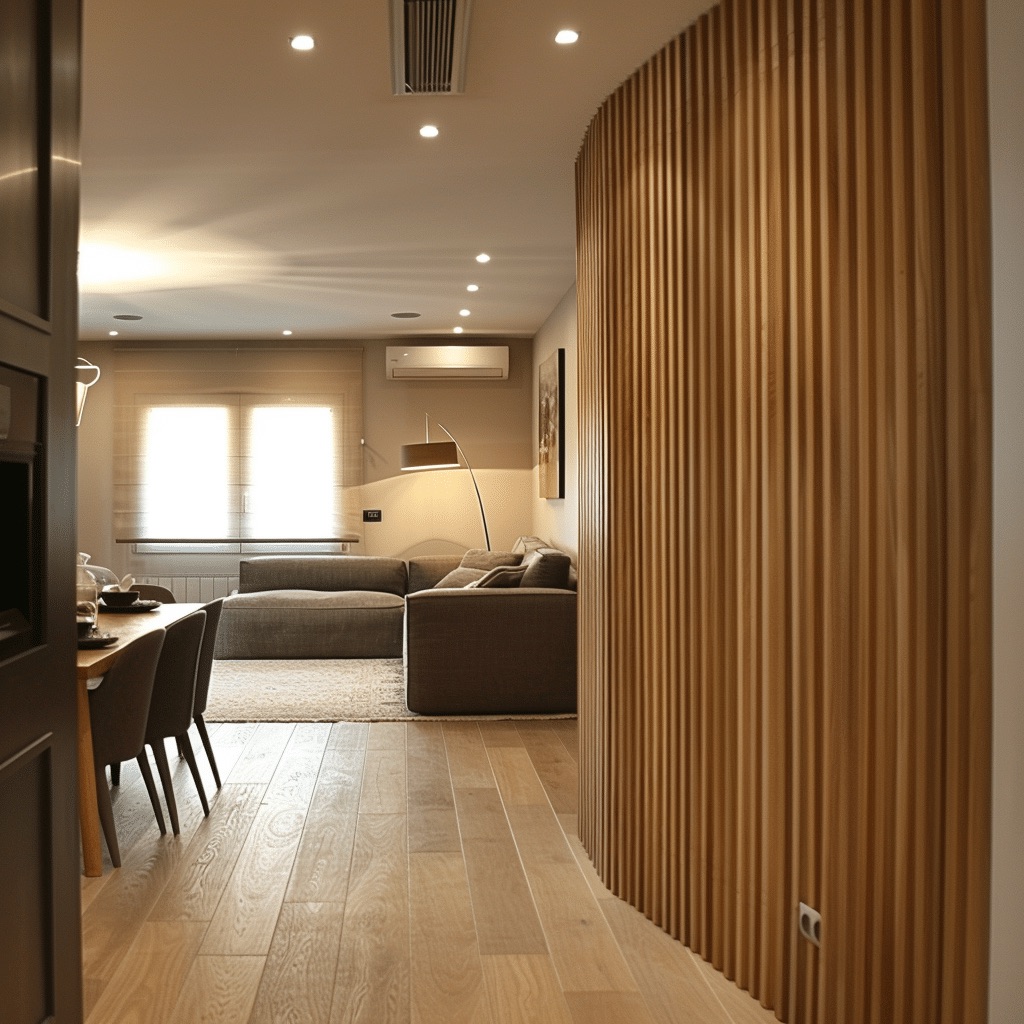When designing a space, noise reduction often becomes a priority for homeowners and professionals alike. Choosing the right wood for noise reduction can dramatically transform the acoustics of a room. Wood not only enhances aesthetic appeal but also serves as a natural sound barrier, making it a popular choice for soundproofing walls, ceilings, and floors. This guide dives deep into the best soundproof wood options, their benefits, and how to effectively integrate them into your space.
Why Use Wood for Noise Reduction?
Wood is a versatile material that offers several benefits beyond its natural beauty. For noise reduction, its fibrous structure helps absorb sound waves, reducing echo and unwanted noise. Here are the key reasons why wood for noise reduction is a great choice:
- Sound Absorption: Wood panels can dampen noise by reducing sound waves’ intensity.
- Eco-Friendly: Many wood panels are sustainably sourced, making them environmentally friendly.
- Aesthetic Appeal: They add warmth and sophistication to any space.
- Durability: Wood panels are long-lasting and resistant to wear.
Types of Soundproof Wood Panels
When selecting the right wood for noise reduction, it’s essential to understand the types of wood panels available. Each has unique properties suited for different acoustic needs.
1. Acoustic Wood Panels
Acoustic wood panels are engineered specifically for sound absorption and noise reduction. They feature a perforated or grooved surface that traps sound waves, preventing them from bouncing around a room.
- Ideal for: Home theaters, offices, and music studios.
- Common woods used: MDF (Medium-Density Fiberboard) and natural oak.
- Benefits:
- Reduces echo and reverberation.
- Enhances sound clarity.
Visualization: Imagine a home theater with sleek wood panels that minimize background noise, allowing you to fully enjoy your movie experience.
2. Solid Wood Panels
Solid wood panels, like pine and cedar, are dense and naturally absorb sound. Their heavy composition creates a strong barrier against external noise.
- Ideal for: Bedrooms, living rooms, and exterior walls.
- Common woods used: Pine, oak, and maple.
- Benefits:
- Blocks external noise effectively.
- Adds a classic, timeless look.
3. Veneered Wood Panels
Veneered panels are made by applying a thin layer of high-quality wood over a composite base. They balance affordability with soundproofing capabilities.
- Ideal for: Budget-friendly projects and decorative walls.
- Common woods used: Birch veneer over MDF.
- Benefits:
- Lightweight yet effective at noise reduction.
- Wide range of finishes to match any décor.
Key Features of Wood Panels for Noise Reduction
Understanding what makes certain wood panels ideal for noise reduction can help you make the best choice. Here are the most important features to consider:
1. Thickness
The thicker the wood, the better it is at blocking sound. For optimal noise reduction, look for panels at least 12mm thick.
2. Perforation Patterns
Acoustic panels with grooved or perforated designs enhance sound absorption by capturing sound waves.
3. Density
Dense woods like oak and mahogany provide superior soundproofing compared to lighter woods like pine.
How to Install Wood Panels for Maximum Noise Reduction
Proper installation is key to achieving the best results. Follow these steps to ensure your wood for noise reduction is effective:
- Prepare the Wall:
- Clean the surface to ensure panels adhere properly.
- Apply a layer of acoustic insulation for additional noise reduction.
- Measure and Cut:
- Measure the wall area and cut the wood panels to fit.
- Attach Panels:
- Use adhesive or screws to secure the panels to the wall.
- Ensure panels are tightly fitted to prevent gaps that allow noise to pass through.
- Seal the Edges:
- Use acoustic caulk to seal the edges for a soundproof finish.
Benefits of Using Wood for Noise Reduction
Using wood for noise reduction offers multiple advantages that go beyond soundproofing:
- Energy Efficiency: Wood acts as an insulator, keeping your space warm in winter and cool in summer.
- Health Benefits: A quieter environment reduces stress and promotes better focus.
- Value Addition: Wood paneling enhances your property’s aesthetic and resale value.
Best Woods for Noise Reduction
| Wood Type | Density | Soundproofing Level | Cost | Best Use |
|---|---|---|---|---|
| Oak | High | Excellent | $$$ | Living rooms, theaters |
| Pine | Medium | Good | $$ | Bedrooms, offices |
| MDF | High | Excellent | $$ | Studios, commercial use |
| Cedar | Medium | Good | $$$ | Exterior walls |
Frequently Asked Questions
1. What makes wood good for noise reduction?
Wood’s fibrous structure naturally absorbs sound waves, reducing echo and blocking external noise.
2. Which wood is best for soundproofing?
Dense woods like oak and MDF are excellent for soundproofing due to their high density and sound-absorbing properties.
3. Can I install wood panels myself?
Yes! Wood panels are DIY-friendly. Just ensure you prepare the wall, measure accurately, and seal any gaps for the best results.
4. Are wood panels eco-friendly?
Many wood panels are made from sustainably sourced materials, making them an environmentally friendly choice.
5. How much do soundproof wood panels cost?
Prices vary based on the type of wood. Solid wood is generally more expensive than veneered or MDF options.
Conclusion
Selecting the right wood for noise reduction can significantly improve the comfort and functionality of your space. Whether you’re upgrading a home theater or simply want a quieter bedroom, wood panels offer an effective and stylish solution. By considering factors like wood type, thickness, and installation methods, you can create a serene, noise-free environment tailored to your needs.








